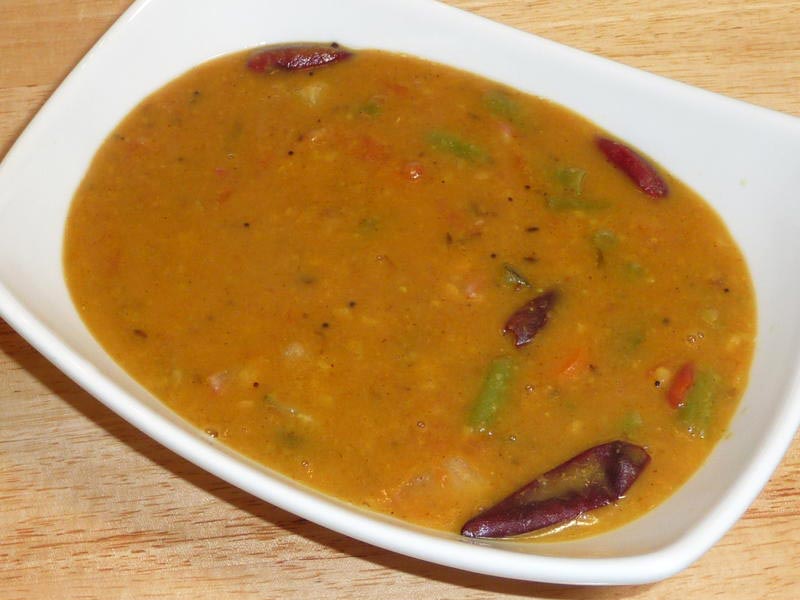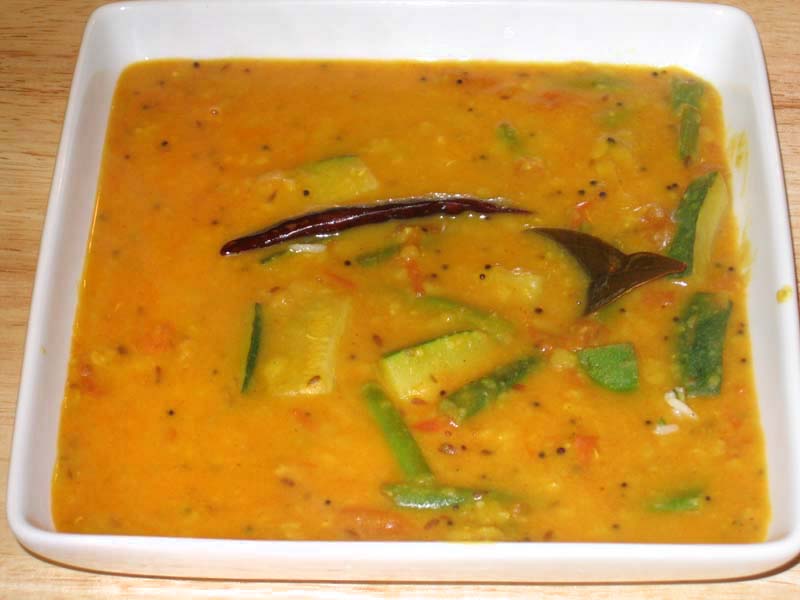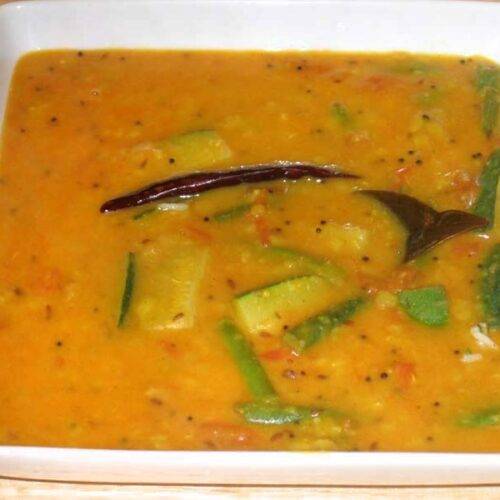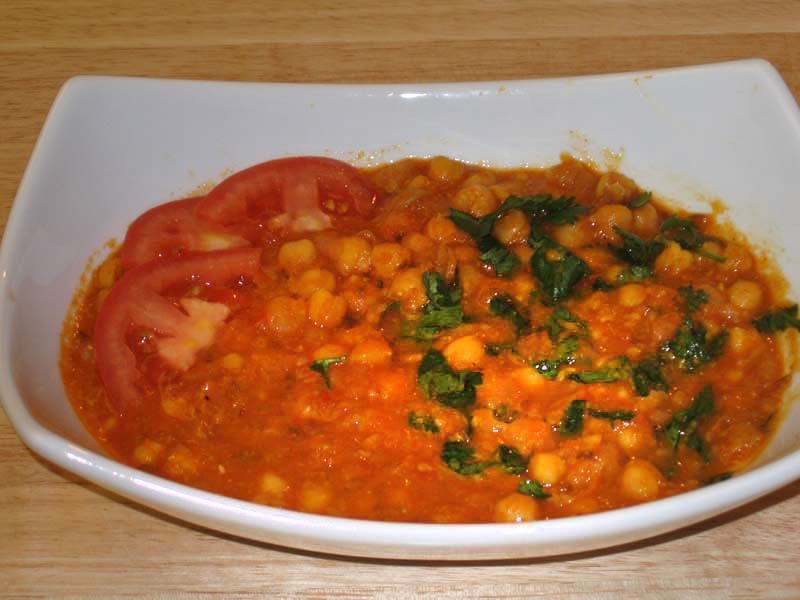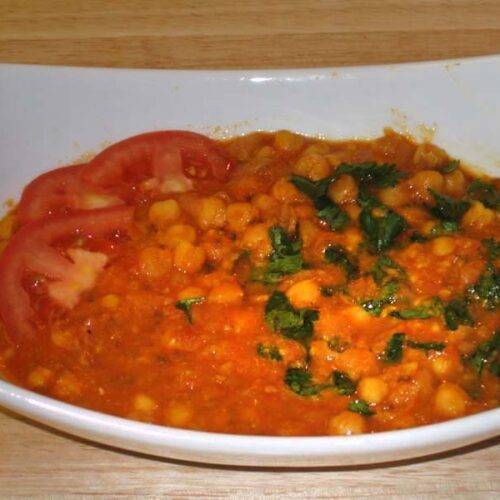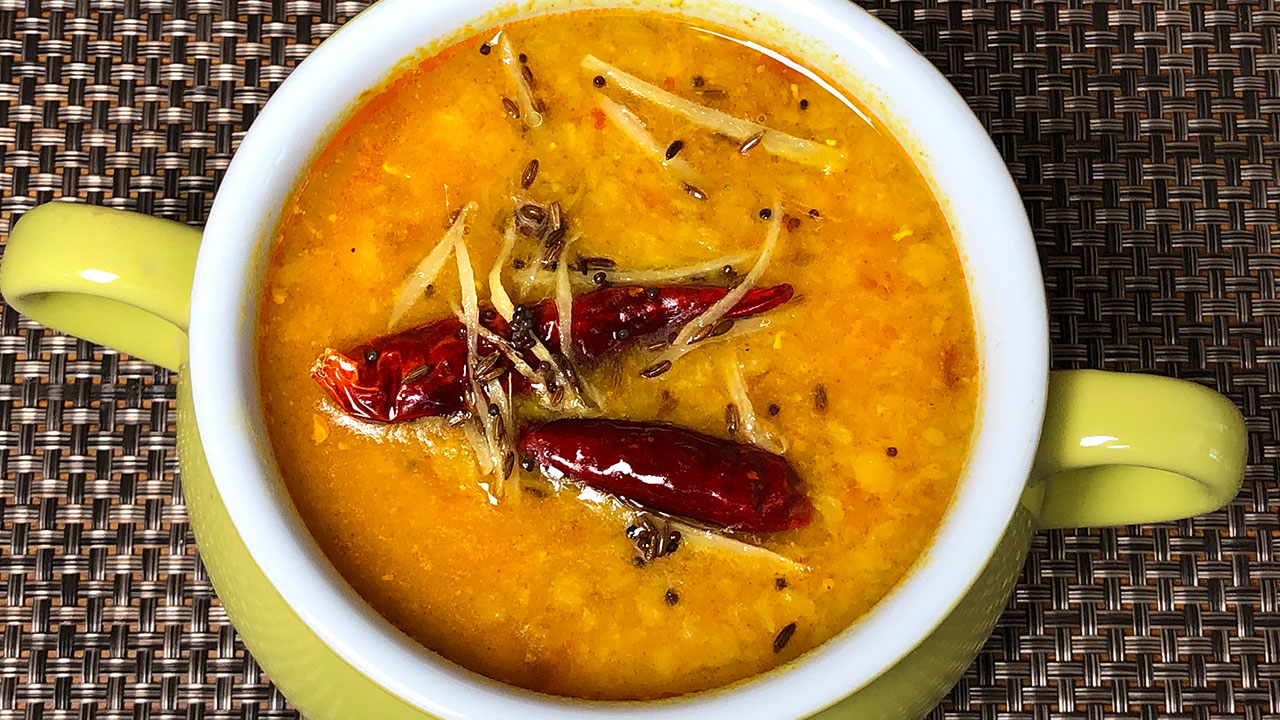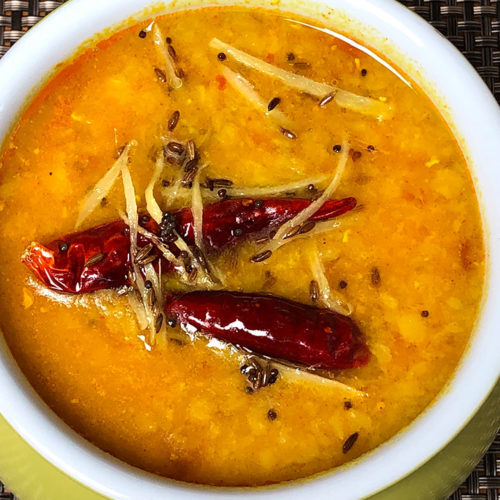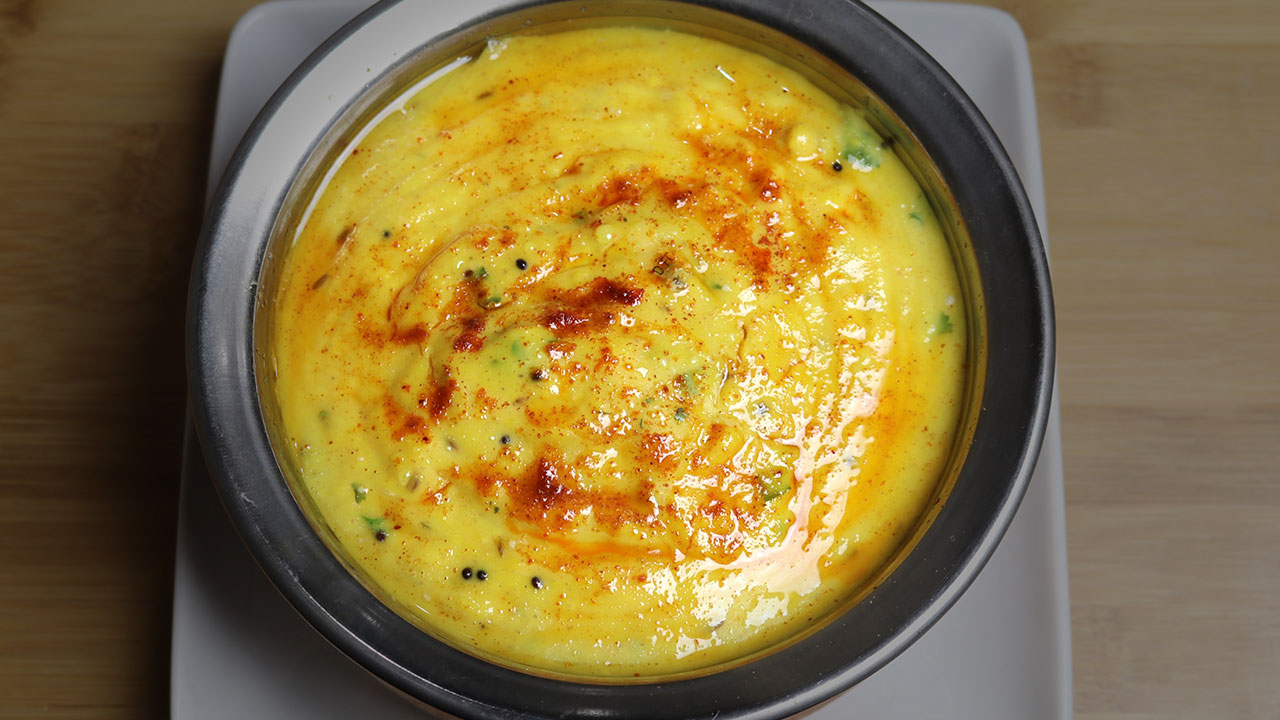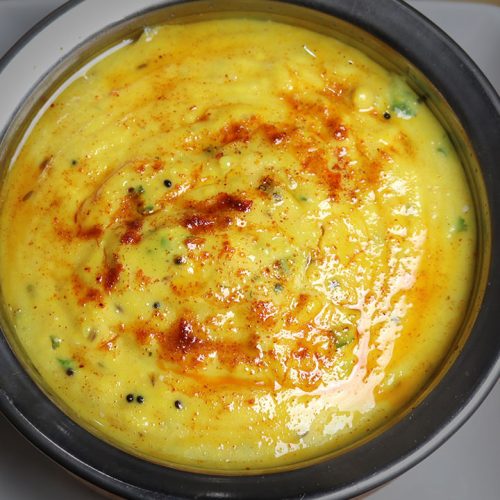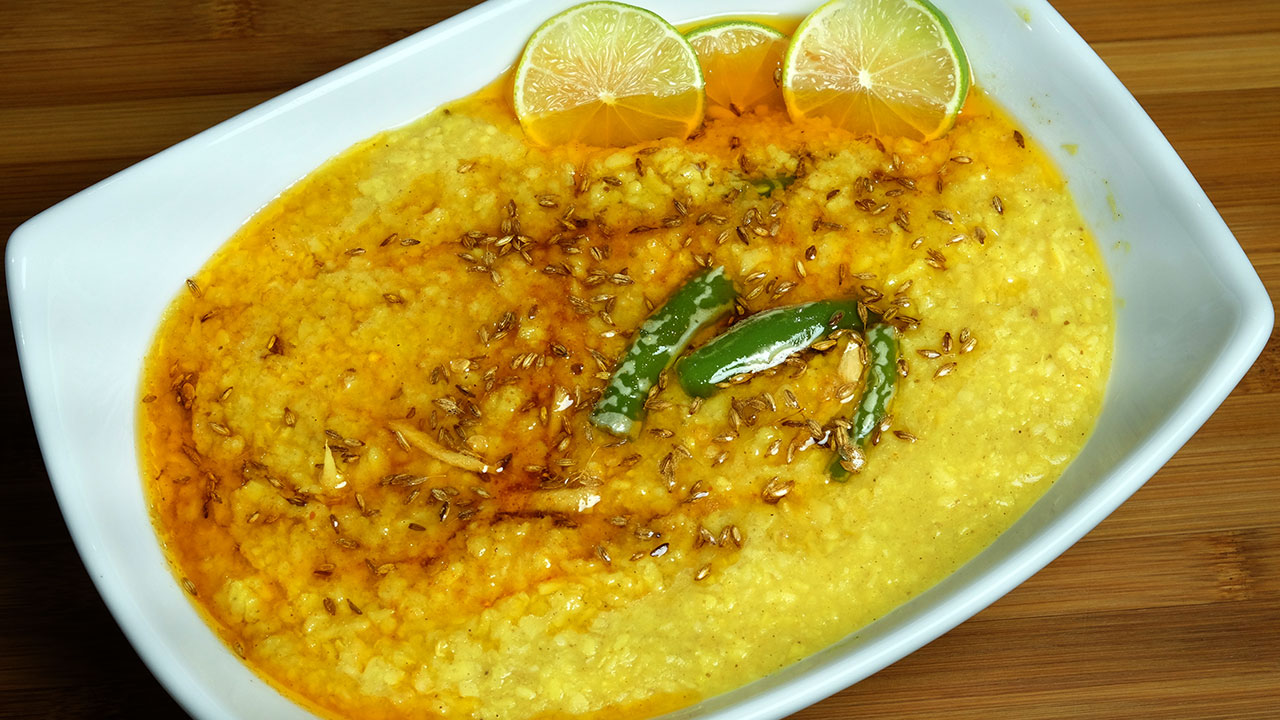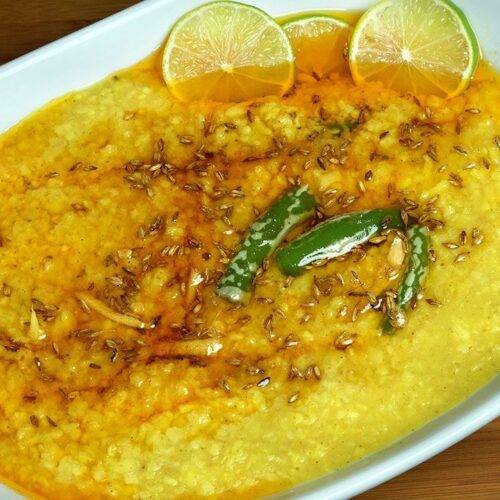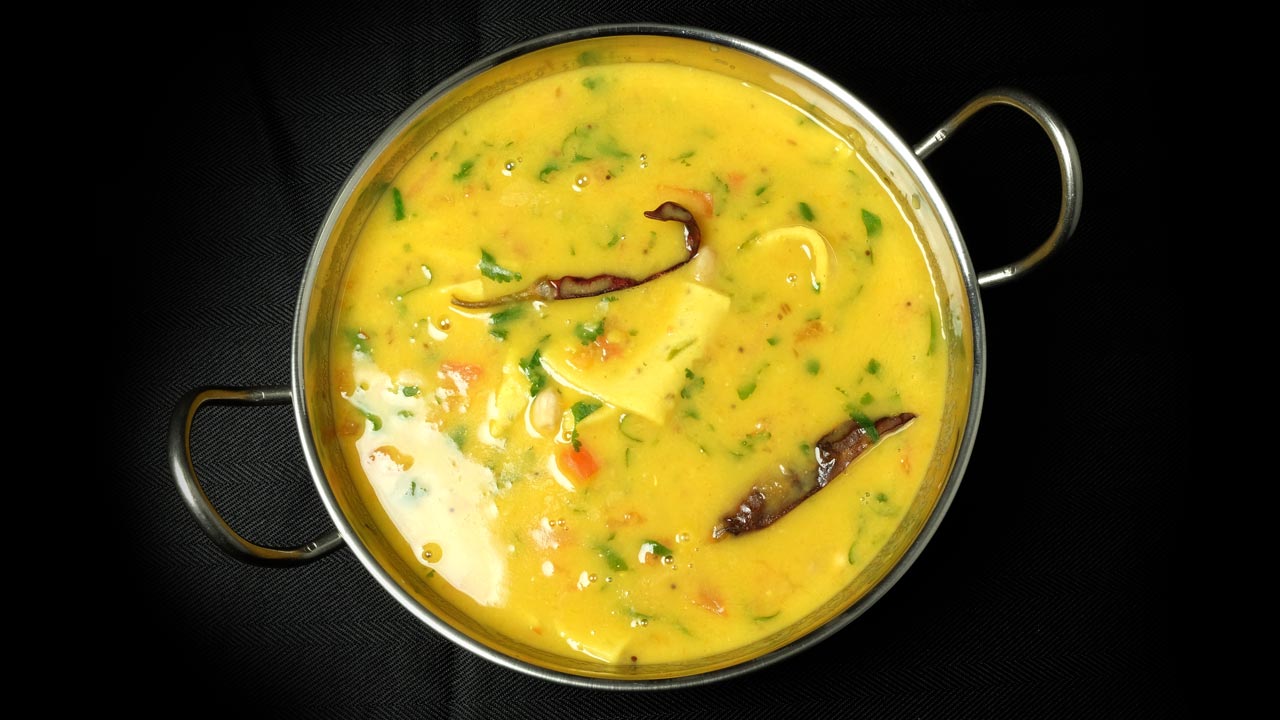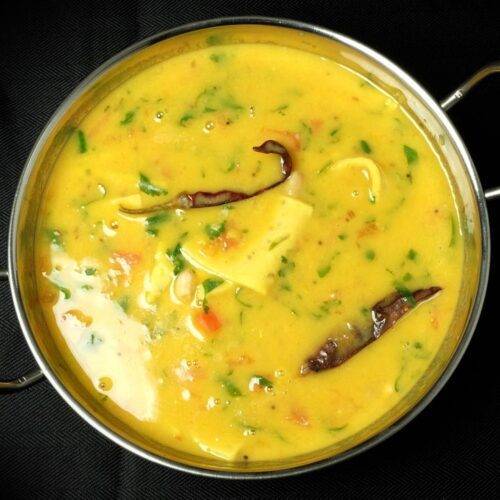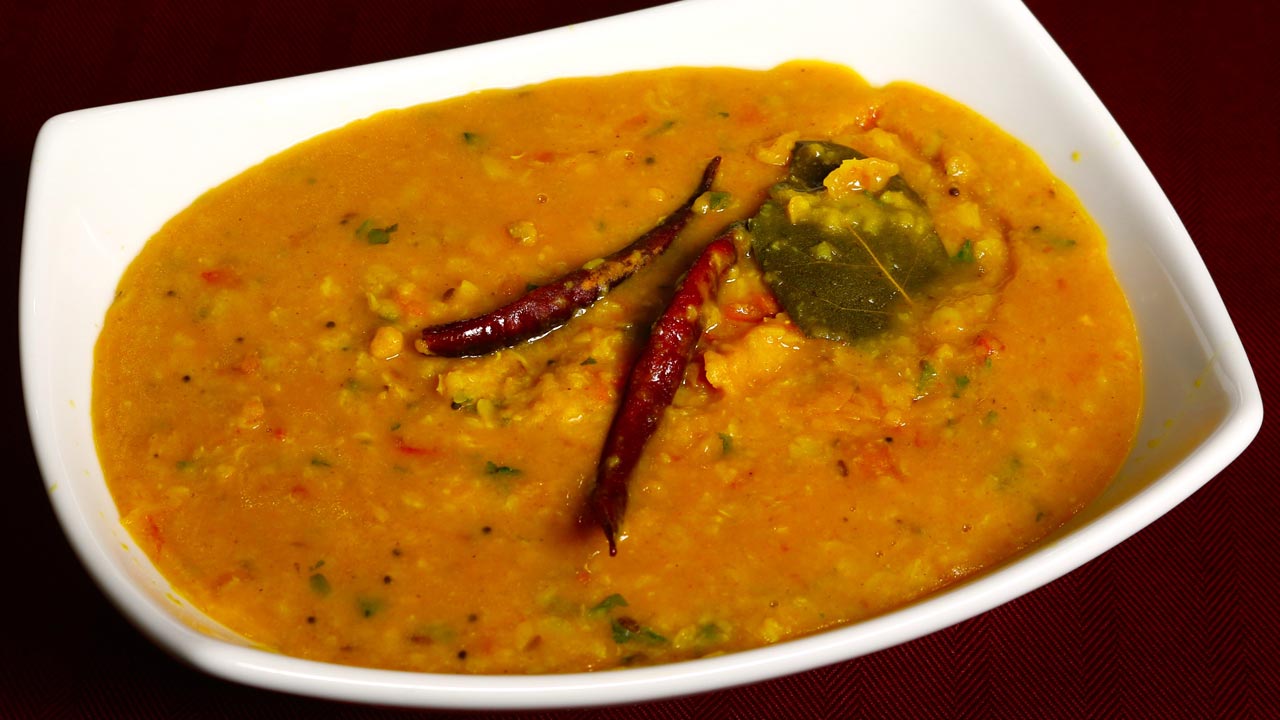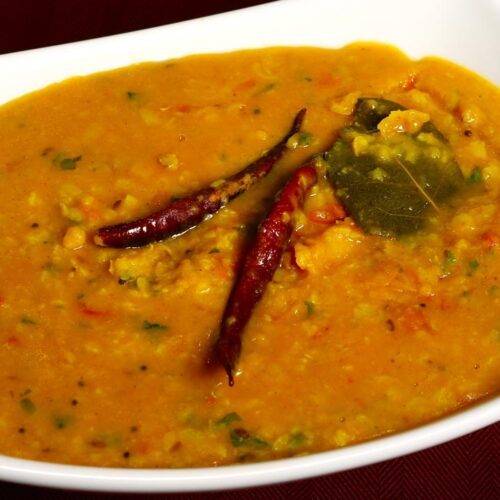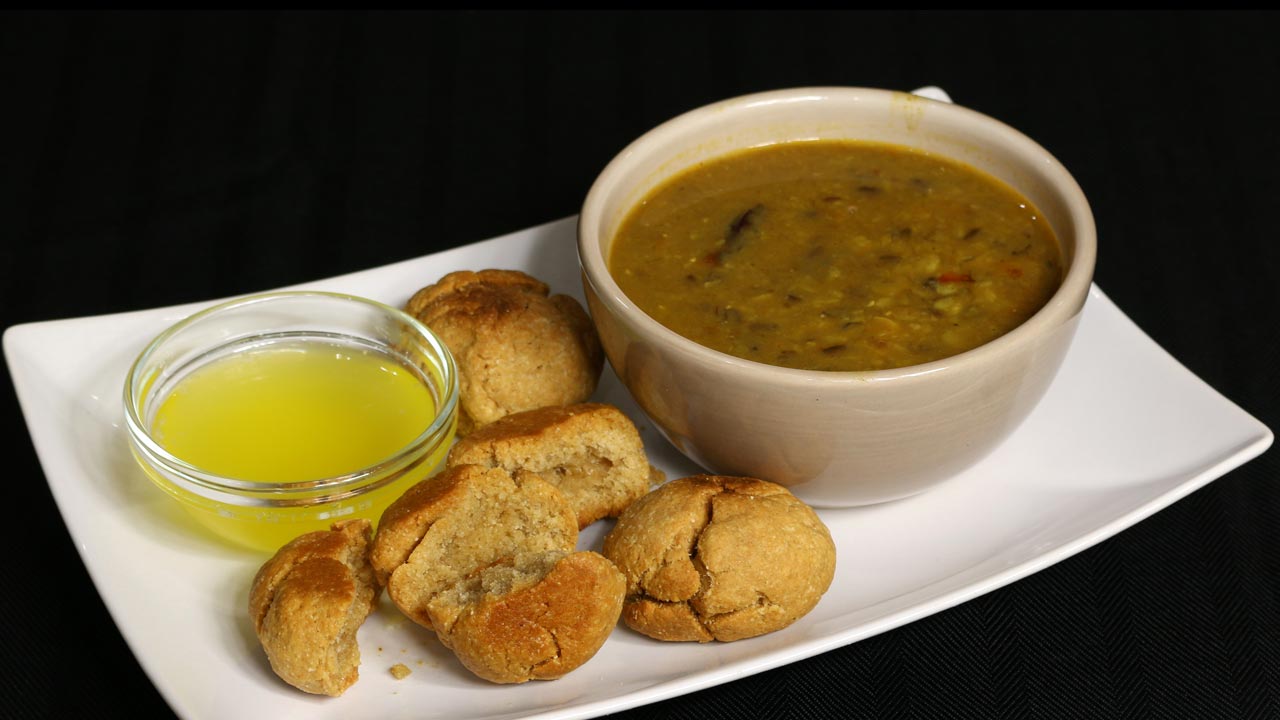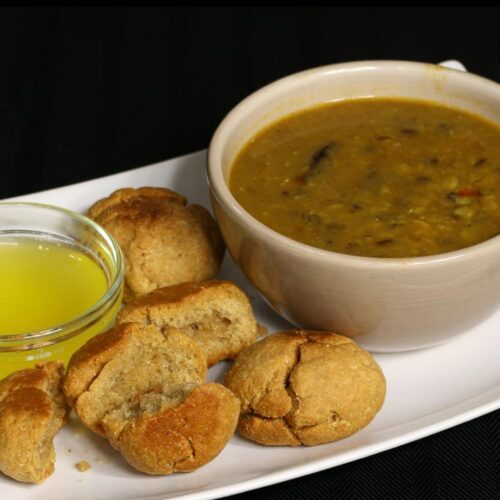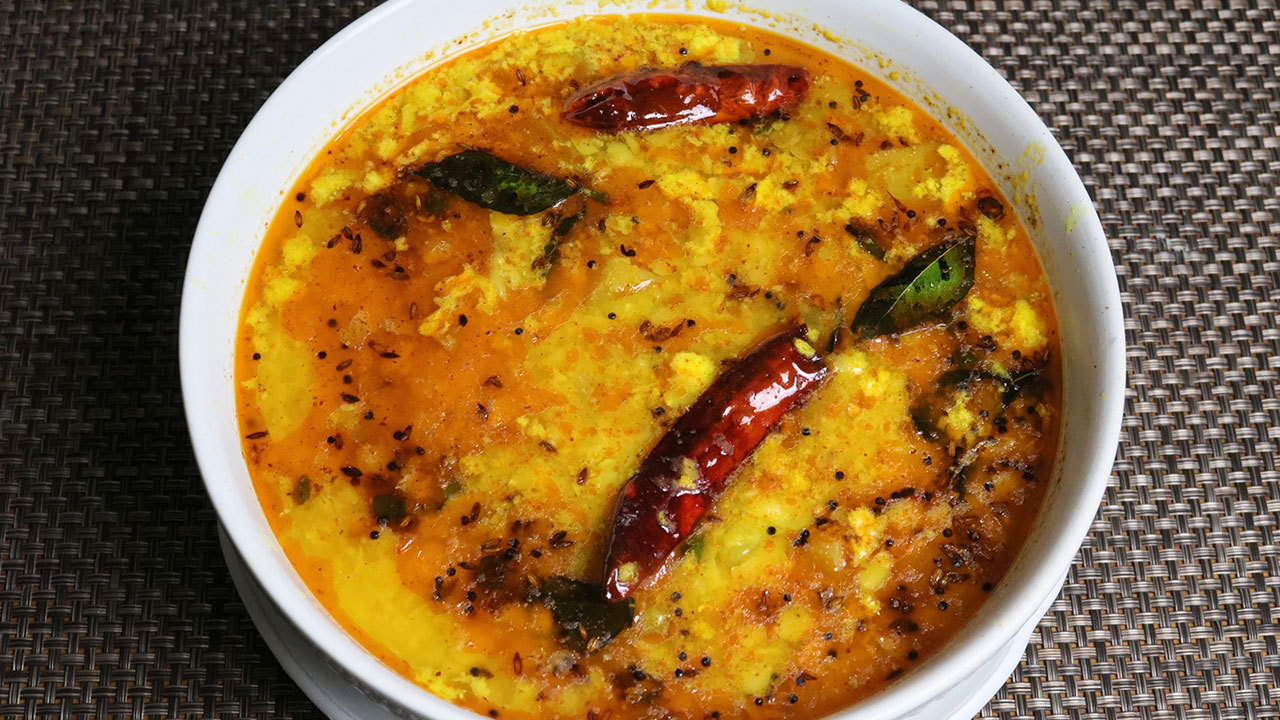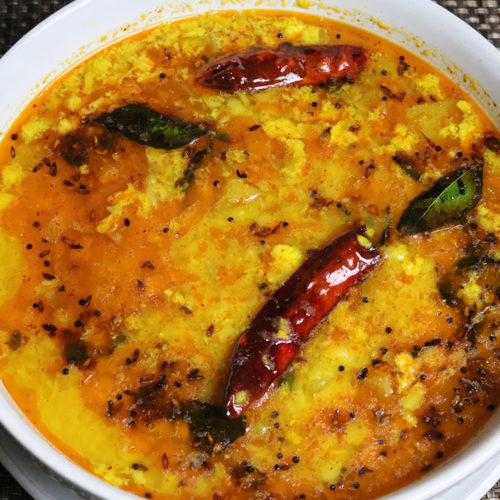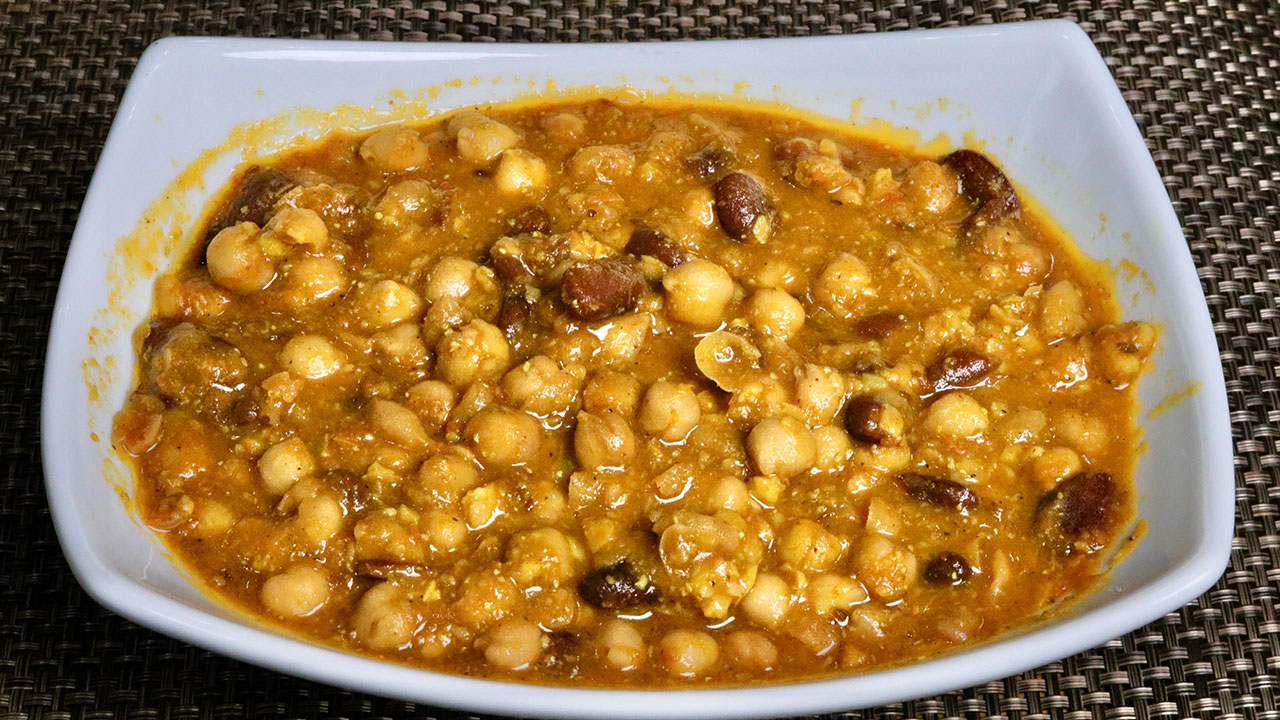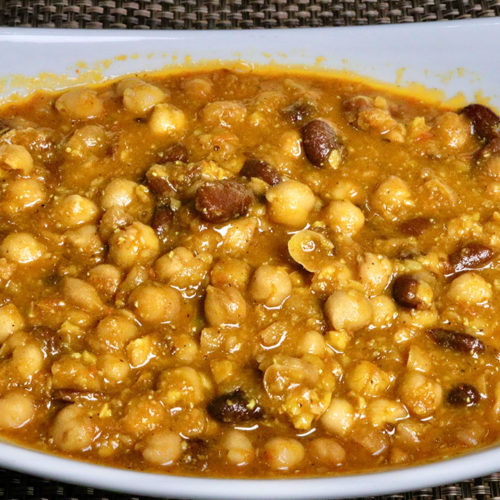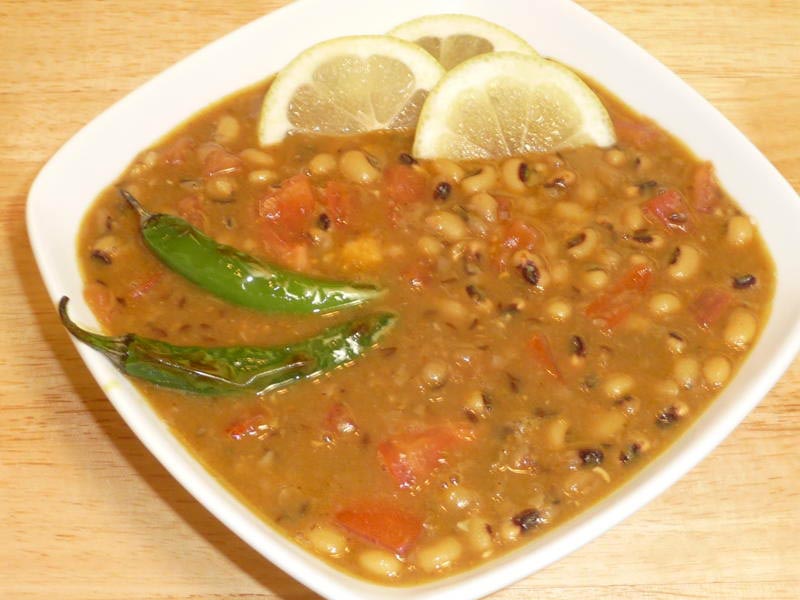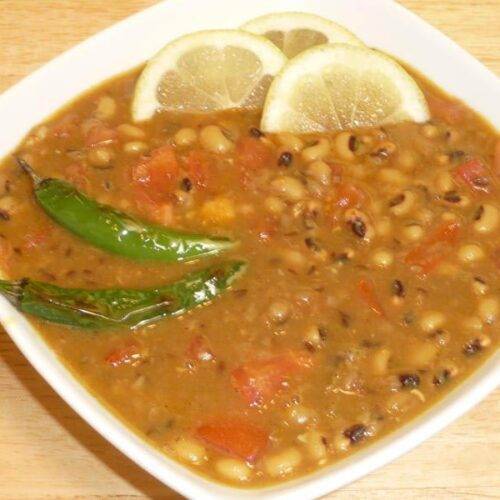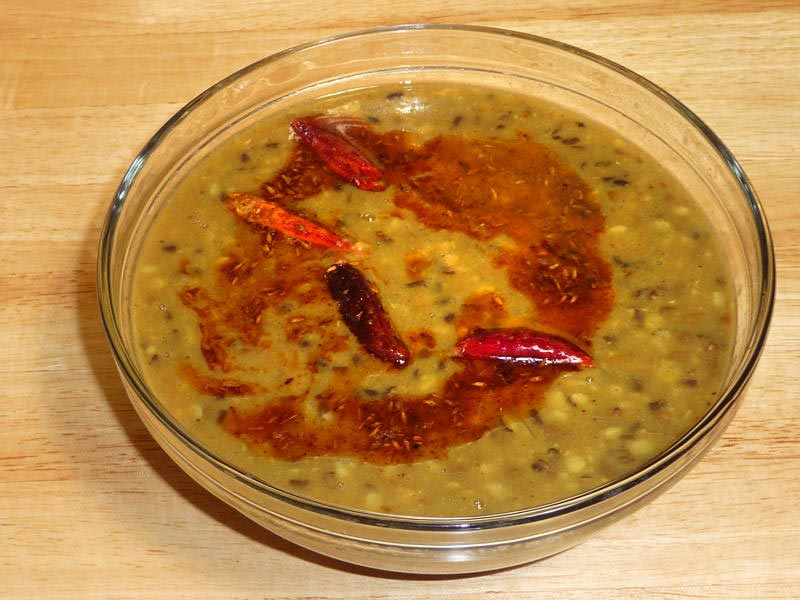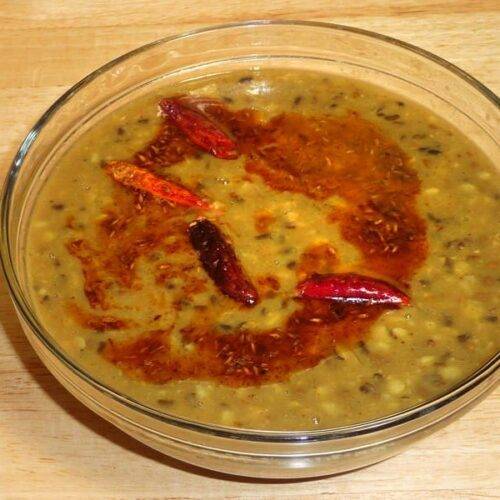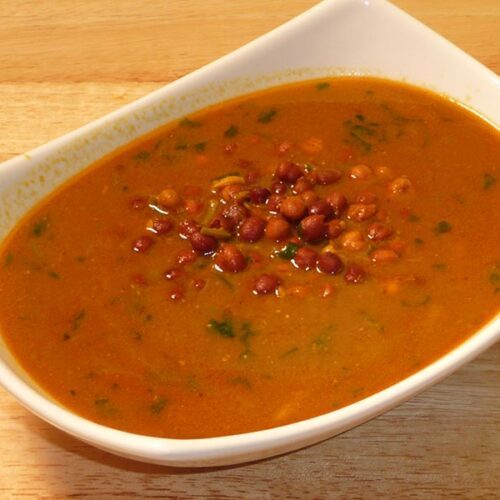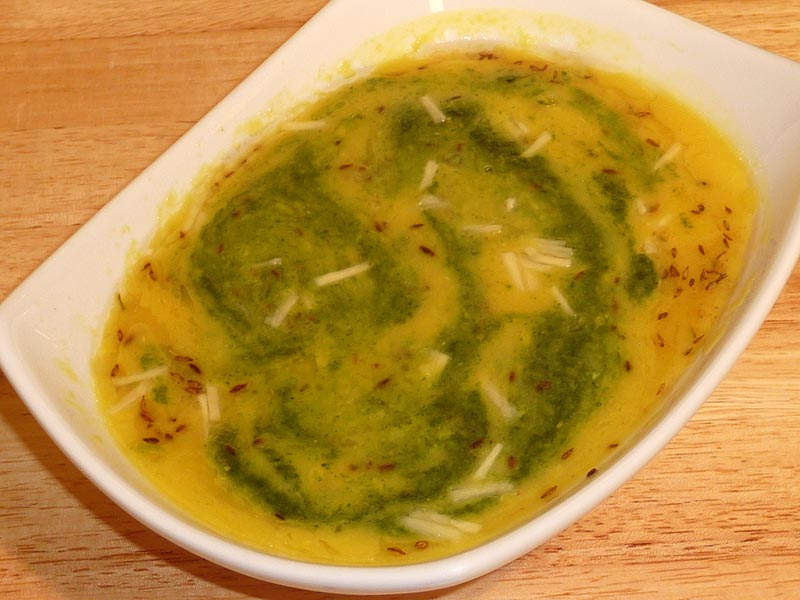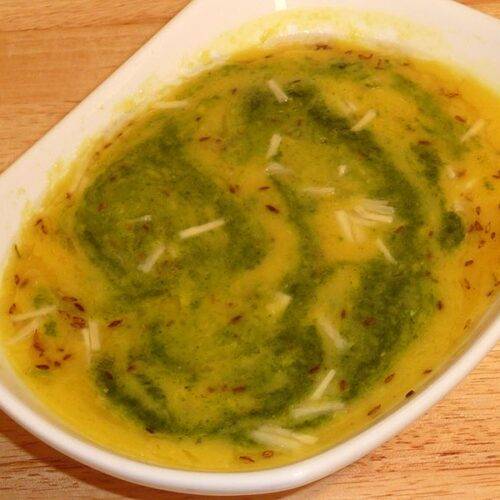Sambar (Spicy Lentil Soup)
Ingredients
- 1/2 cup toor dal/arhar dal available in any Indian grocery store
- 1/2 tbsp salt
- 1/4 tbsp turmeric (haldi)
- 2 tbsp oil
- 1/2 tbsp cumin seeds (jeera)
- 1/8 tbsp fenugreek seed (methi)
- 1/4 tbsp mustard seeds (rai)
- Pinch of asafetida (hing)
- 10-12 curry leaves
- 4 dry whole red chilies
- 1 large tomato cubed in small pieces
- 1-½ cups mixed vegetables, cute into bite-size cubes (green beans, carrots, zucchini, radishes)
- 2 tbsp tamarind pulp
- 1/2 tbsp salt
- 1 tbsp sambar powder, available in any Indian grocery store
Instructions
- Wash and soak the dal in two cups of water for ten minutes or longer.
- In a pressure cooker combine soaked dal with 2½ cups of water, salt, and turmeric. Cook over medium high heat.
- When the pressure cooker starts to steam, reduce the heat to medium and cook for another six minutes.
- Turn off the heat and wait until steam has escaped before opening the pressure cooker. Dal should be soft and mushy.
- Mix the dal well enough to remove lumps. If the dal is thick, add up to one cup of water.
Notes
- Heat the oil in a saucepan. Test the heat by adding one cumin seed to the oil; if it cracks immediately, the oil is ready.
- Add cumin seeds, mustard seeds, fenugreek seeds, asafetida, red chilies, and curry leaves. Stir for a few seconds.
- Add tomatoes, vegetables, sambar powder, tamarind pulp and ½ cup water.
- Cover the pan and let the vegetables cook until they are tender over medium heat.
- Combine the vegetables and the dal to make the Sambar. Sambar should be thin, like soup. If the sambar is thick, add water as needed.
- Cook sambar on low heat for 10-15 minutes.
How to make Sambar Masala: Sambar Recipe
Sambar is a quintessential South Indian dish that holds a cherished place in Indian cuisine. This sambar recipe is a delightful combination of sambar dal, vegetables, and aromatic spices, creating a flavorful and nutritious sambar masala. In this comprehensive guide, we’ll explore how to make sambar step by step, incorporating tips, variations, and benefits to elevate your culinary experience.
Tips for Perfecting Your Sambar Recipe
- Use Fresh Ingredients: Opt for fresh spices, vegetables, and lentils to ensure the best flavor and texture in your sambar.
- Balance the Flavors: Adjust the proportions of tamarind paste, jaggery, and salt to achieve the perfect balance of sour, sweet, and savoury notes in your sambar.
- Experiment with Vegetables: Don’t hesitate to experiment with different combinations of vegetables to create unique variations of sambar tailored to your liking.
- Temper with Care: Take care not to burn the spices while tempering, as it can impart a bitter taste to the sambar. Maintain medium heat and keep a close eye on the tempering process.
- Allow for Resting Time: Let the sambar rest for a few minutes after cooking to allow the flavors to develop fully before serving.
Variations of Sambar
- Mixed Vegetable Sambar: Incorporate a medley of seasonal vegetables such as pumpkin, beans, and bell peppers for a colorful and nutritious twist on the classic sambar.
- Tiffin Sambar: Prepare a thinner version of sambar specifically paired with idli, dosa, or vada, featuring a lighter consistency and a higher proportion of tamarind for tanginess.
- Kadamba Sambar: This variation of sambar includes a diverse range of vegetables along with freshly ground spices, lending it a robust and hearty character ideal for special occasions.
Benefits of Including Sambar in Your Diet
- Rich in Protein: Sambar is a rich source of protein due to the inclusion of lentils, making it a nourishing option for vegetarians and vegans.
- Loaded with Vitamins and Minerals: The array of vegetables in sambar provides essential vitamins, minerals, and dietary fibre, promoting overall health and well-being.
- Digestive Aid: The spices and herbs in sambar, such as cumin, fenugreek, and curry leaves, possess digestive properties that aid in digestion and alleviate digestive discomfort.
- Low in Calories: Despite its hearty and satisfying nature, sambar is relatively low in calories, making it a guilt-free indulgence for those watching their calorie intake.
- Boosts Immunity: The antioxidants present in the spices and vegetables in sambar help strengthen the immune system and protect the body against various infections and diseases.
FAQs (Frequently Asked Questions) About Sambar
-
Can I make sambar without tamarind paste?
- Yes, you can substitute tamarind paste with lemon juice or dried mango powder (amchur) for a tangy flavor in your sambar.
-
Is sambar gluten-free?
- Yes, sambar is naturally gluten-free as long as no wheat-based ingredients such as asafoetida powder (hing) are used in the recipe. You can use gluten-free asafoetida or omit it altogether to ensure the dish is gluten-free.
-
Can I make sambar ahead of time?
- Yes, you can prepare sambar in advance and store it in an airtight container in the refrigerator for up to 2-3 days. Reheat gently on the stovetop or microwave before serving.
-
Can I freeze leftover sambar?
- While it’s technically possible to freeze leftover sambar, the texture of the vegetables and lentils may change upon thawing, resulting in a slightly altered consistency. It’s best to consume fresh sambar for optimal taste and texture.
If you’re looking to explore more Indian recipes, appetizers, beverages, and desserts, be sure to check out the following links on Manjula’s Kitchen. Here are some links to recipes on Manjula’s Kitchen official website: Vegetable Pakoras, Kaju Katli (Cashew Burfi), Baingan Bharta (Roasted Eggplant), Matar (Green Peas) Paneer, Besan Ladoo.

